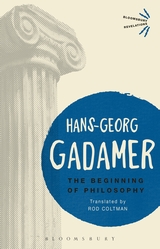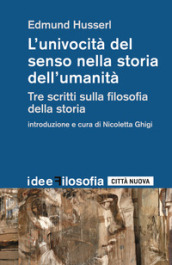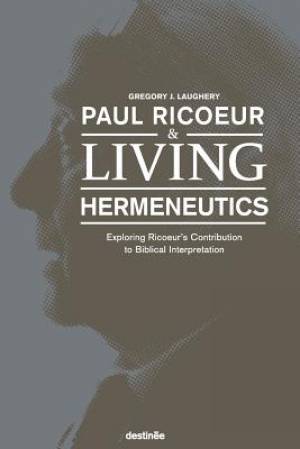 The Beginning of Philosophy
The Beginning of Philosophy
Bloomsbury Revelations
Ancient philosophy
Bloomsbury
2016
Paperback $20.66
128

Reviewed by: Guy Bennett-Hunter (University of Edinburgh)
The textual history of The Beginning of Philosophy is long and convoluted. Its origins are in Gadamer’s final lecture course as Professor Emeritus at Heidelberg delivered shortly before his retirement at the end of 1967. 20 years later, Gadamer delivered a series of Italian lectures on the same topic without a script. These were recorded and transcribed by Vittorio DeCesare. Reclam published a German translation by Joachim Schulte (Der Anfang der Philosophie (1988)). The present volume is based on Gadamer’s own ‘definitive revision’ of Schulte’s translation (ix).
It is perhaps appropriate that there should be such ambiguity about whether, and in what way, we can reasonably hope to have the authoritative version of this text. For rendering such questions explicit was Gadamer’s life’s work.
Gadamer’s theme is the beginning of Western philosophy, which he says also represents the beginning of Western culture (1). But what is most illuminating about the volume is the way in which Gadamer approaches his subject. He claims early on that ‘the sole philosophical access to an interpretation of the Presocratics’ is not Thales, Homer, or the Greek language but Plato and Aristotle. ‘Everything else is historicism without philosophy.’ (2) And, as he explains towards the end of the book, ‘I would not by any means want to be understood as though I did not appreciate the method of the historians. It is just that philosophy is something different.’ (102)
This ‘something different’ is a way of thinking that, rather than trying to eliminate the prejudices that are integral to all understanding, acknowledges them and works within their constraints. For, as Gadamer defines them, our prejudices are simply our rootedness in a tradition (38). Gadamer’s insistence on Plato and Aristotle as our sole hermeneutic access to the Presocratics is motivated by his recognition of the inadequacy of the concept of method ‘in the sense of guaranteeing objectivity’. For when they spoke of their predecessors, ‘Plato and Aristotle did not have our historical scholarship in mind but were guided by their own interests, by their own search for truth’ (22). Therefore, the sense of ‘beginning’ that Gadamer has in mind is ‘that of the beginning that does not know in advance in what way it will proceed’ (12). True research is not about finding answers as much as it is about discovering new questions and imagining fruitful new ways of posing them (17). Thus Gadamer embarks on his discussions of the Presocratic conception of the soul and its relationships to life and death.
His distinctive philosophical approach to these discussions, however, draws attention to his key point. Every text has at least two contexts: that in which it was created and that in which it is read. It follows from the fact that it is impossible, in a given case, to know whether these contexts align that, ‘torn out of its context,’ a quotation can be used for any purpose whatsoever. ‘Whoever quotes,’ Gadamer says, ‘already interprets by means of the form in which he or she presents the text of the quotation.’ (13) Witness the quite different purposes for which the Presocratics were quoted by the Stoics, Sceptics, and patristic writers. While there are significant difficulties involved in using the texts of Plato and Aristotle (which were not written for this purpose) to find out about this other tradition, Gadamer believes that Plato’s transparent use of that tradition to depict ‘his own turn toward the Idea’ (31) permits him to ‘guess at certain tendencies of the culture of this bygone era’ (30) in a way denied to the compilers of compendia of Presocratic quotations.
With regard to the first context, that in which the ancient Greek texts were created, Gadamer displays an erudition that is rare today. But it is their second context, that of contemporary philosophy, that impresses this reader with greater urgency. Through his engagement with Greek culture, Gadamer hopes to realize his ideal of philosophical research as ‘a movement that is open at first and not yet fixed but which concretizes itself into a particular orientation with ever-increasing determinateness’. What this engagement shows is that the supposed freedom of modern science to stand at a distance from the object being investigated simply does not exist. ‘We all stand in the life-stream of tradition’, Gadamer writes, ‘and do not have the sovereign distance that the natural sciences maintain in order to conduct experiments and to construct theories.’ (19) Rather than a philosophically problematic relation between subject and object, which is simply presupposed by the empirical method, Gadamer stresses ‘participation’, ‘like the believer who is faced with a religious message’ (22). While this may read like a challenge to the natural sciences’ ideal of objectivity, which they threaten to extend even to the human subject, Gadamer reassures us that the human sciences are properly occupied with quite different tasks (21).
In instructive contrast to the contemporary academy, where not only the social sciences but also the human sciences and philosophy have arguably been infected by these naturalistic inclinations, Gadamer identifies the ‘highest point of Greek philosophy’ as the idea of a ‘mutuality of participation existing between object and subject’. ‘For the Greeks,’ he writes, ‘the essence of knowledge is the dialogue and not the mastery of objects’. (60)
Such thoughts emerging from Gadamer’s reading of the Presocratics via Plato and Aristotle, will be familiar to the readers of phenomenologists like Karl Jaspers, who explicitly described the nature of the subject–object split [Subjekt–Objekt Spaltung] in similar terms. Subject and object are not to be reified, considered as entities or substances, each of which could possibility exist without the other. A Spaltung, usually translated as ‘split’ or ‘cleavage’, is not a dichotomy. It is a distinction between aspects of reality that are, at the most primordial level, unified. In form as well as content, then, The Beginning of Philosophy leads us to the perhaps unexpected conclusion that it is the phenomenological method, for Gadamer represented by Husserl and Heidegger, that has ‘pointed the way for contemporary philosophy’ (60).





